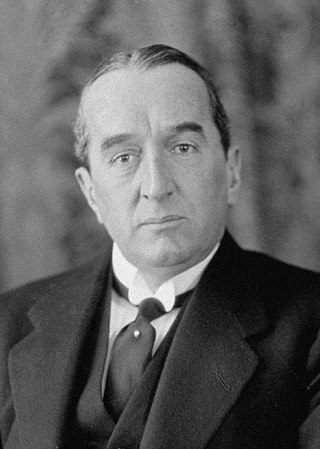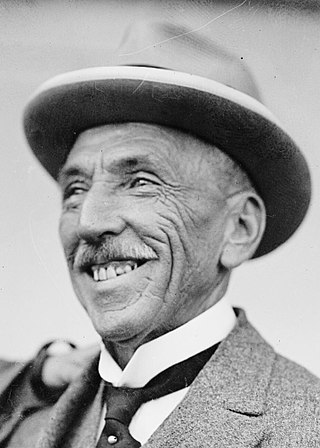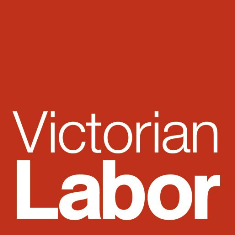Related Research Articles

The Nationalist Party, also known as the National Party, was an Australian political party. It was formed in February 1917 from a merger between the Liberal Party and the National Labor Party, the latter formed by Prime Minister Billy Hughes and his supporters after the 1916 Labor Party split over World War I conscription. The Nationalist Party was established as a 'united' non-Labor opposition that had remained a political trend once the Labor party established itself in federal politics. The party was in government until electoral defeat in 1929. From that time it was the main opposition to the Labor Party until it merged with pro-Joseph Lyons Labor defectors to form the United Australia Party (UAP) in 1931. The party is a direct ancestor of the Liberal Party of Australia, the main centre-right party in Australia.

The AustralianHouse of Representatives is the lower house of the bicameral Parliament of Australia, the upper house being the Senate. Its composition and powers are set down in Chapter I of the Constitution of Australia.

The speaker of the Australian House of Representatives is the presiding officer of the Australian House of Representatives, the lower chamber within the Parliament of Australia. The counterpart in the upper house is the president of the Senate. The office of the speakership was established in 1901 by section 35 of the Constitution of Australia. The primary responsibilities of the office is to oversee house debates, determine which members may speak, maintain order and the parliamentary and ministerial codes of conduct during sessions and uphold all rules and standing orders. The current speaker of the House of Representatives is Milton Dick, who was elected on 26 July 2022.

Ernest Shoebridge Carr was an Australian politician. He was a member of the Australian House of Representatives from 1906 until 1917 for the electorate of Macquarie, representing the Australian Labor Party until the 1916 Labor split and thereafter joining the new Nationalist Party. He was later a Nationalist member of the New South Wales Legislative Assembly from 1920 to 1922, representing the electorate of Cumberland.

The 1931 Australian federal election was held on 19 December 1931. All 75 seats in the House of Representatives and 18 of the 36 seats in the Senate were up for election.

The 1929 Australian federal election was held in Australia on 12 October 1929. All 75 seats in the House of Representatives were up for election, but there was no Senate election. The election was caused by the defeat of the Stanley Bruce-Earle Page Government in the House of Representatives over the Maritime Industries Bill, Bruce having declared that the vote on the bill would constitute a vote of confidence in his government.

The 1928 Australian federal election was held in Australia on 17 November 1928. All 75 seats in the House of Representatives and 19 of the 36 seats in the Senate were up for election. The incumbent Nationalist–Country coalition, led by Prime Minister Stanley Bruce won a record fifth consecutive election defeating the opposition Labor Party led by James Scullin.

The 1925 Australian federal election was held in Australia on 14 November 1925. All 75 seats in the House of Representatives and 22 of the 36 seats in the Senate were up for election. The incumbent Nationalist–Country coalition, led by Prime Minister Stanley Bruce, defeated the opposition Labor Party led by Matthew Charlton in a landslide. This was the first time any party had won a fourth consecutive federal election.

The 1919 Australian federal election was held on 13 December 1919 to elect members to the Parliament of Australia. All 75 seats in the House of Representatives and 19 of the 36 seats in the Senate were up for election. The incumbent Nationalist Party government won re-election, with Prime Minister Billy Hughes continuing in office.

The 1917 Australian federal election was held in Australia on 5 May 1917. All 75 seats in the House of Representatives and 18 of the 36 seats in the Senate were up for election. The incumbent Nationalist Party, led by Prime Minister Billy Hughes, defeated the opposition Labor Party led by Frank Tudor in a landslide.
The 1918 Swan by-election was a by-election for the Division of Swan in the Australian House of Representatives, following the death of the sitting member Sir John Forrest. Held on 26 October 1918, the by-election led to the election of the youngest person to be elected until 2010 to the Parliament of Australia, Edwin Corboy. It saw the conservative vote split between the Country Party and the Nationalist Party, which directly prompted the introduction of preferential voting in Australia.
This is a list of the members of the Australian House of Representatives in the Eighth Australian Parliament, which was elected at the 1919 election on 13 December 1919.
This is a list of the members of the Australian House of Representatives in the 12th Australian Parliament, which was elected at the 1929 election on 12 October 1929. The incumbent Nationalist Party of Australia led by Prime Minister of Australia Stanley Bruce in power since 1923 with coalition partner the Country Party led by Earle Page was defeated by the opposition Australian Labor Party led by James Scullin. Labor won with its then largest-ever majority in the federal parliament. However major divisions within the Labor over policy responses to the Great Depression, and the subsequent creation of the United Australia Party led to thirty parliamentarians changing their party affiliation in 1931.
This article provides information on candidates who stood for the 1922 Australian federal election. The election was held on 16 December 1922.
This article provides information on candidates who ran in the 1928 Australian federal election. The election was held on 17 November 1928.
This article provides information on candidates who stood for the 1931 Australian federal election. The election was held on 19 December 1931.
This is a list of members of the Australian Senate from 1929 to 1932. Half of its members were elected at the 14 November 1925 election and had terms starting on 1 July 1926 and finishing on 30 June 1932; the other half were elected at the 17 November 1928 election and had terms starting on 1 July 1929 and finishing on 30 June 1935. The process for filling casual vacancies was complex. While senators were elected for a six-year term, people appointed to a casual vacancy only held office until the earlier of the next election for the House of Representatives or the Senate.
This is a list of members of the Australian Senate from 1926 to 1929. Half of its members were elected at the 16 December 1922 election and had terms starting on 1 July 1923 and finishing on 30 June 1929; the other half were elected at the 14 November 1925 election and had terms starting on 1 July 1926 and finishing on 30 June 1932. The process for filling casual vacancies was complex. While senators were elected for a six-year term, people appointed to a casual vacancy only held office until the earlier of the next election for the House of Representatives or the Senate.
A by-election was held for the Australian House of Representatives seat of Kalgoorlie on 18 December 1920. It was triggered by the expulsion from the House of Labor Party MP Hugh Mahon.

The Victorian Labor Party, officially known as the Australian Labor Party and commonly referred to simply as Victorian Labor, is the Victorian state branch of the Australian Labor Party (ALP). Victorian Labor forms the incumbent government in the state of Victoria and is led by Jacinta Allan, who has served concurrently as Premier of Victoria since 2023.